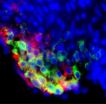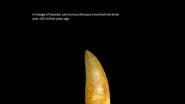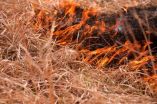(Press-News.org) There is epidemiological evidence that links type B coxsackie virus (CVB) infection with heart disease, and research published on July 31st in PLOS Pathogens now suggests a mechanism by which early infection impairs the heart's ability to tolerate stress at later stages of life.
CVB infection is very common and affects mostly children. The symptoms range widely: over half of the infections are thought to be asymptomatic, the majority of children who get sick have only a mild fever, and a very small proportion get inflammation of the heart or brain. On the other hand, 70 – 80% of patients with heart failure show signs of a previous CVB infection but have no history of viral heart disease, raising the possibility that even a mild earlier infection makes them more vulnerable to get heart disease later on.
To investigate this, researchers from San Diego State University, USA, led by Roberta Gottlieb and Ralph Feuer, first established a mouse model of mild juvenile CVB infection. Mice infected with a non-lethal dose of the virus shortly after birth did not develop any heart disease symptoms during the infection or into adulthood, but they had a predisposition to heart disease later in life.
Detailed analysis of the mice after infection showed that the virus does indeed target the heart and is found in cardiac stem cells. When comparing the numbers of cardiac stem cells in previously infected adult mice with uninfected ones, the researchers found significantly smaller numbers in the infected mice.
To test whether the childhood infection and stem cell depletion had any effect on the adult heart, the researchers exposed infected mice to two different types of cardiac stress. They treated some of the mice with a drug known to overstimulate the heart, and they challenged another group by making them swim for 90 minutes every day for 14 days. Following both treatments, the infected mice showed clear signs of early heart disease whereas uninfected controls showed little or no symptoms.
Analyzing the stressed mice in more detail, the researchers found that the hearts from previously infected mice had impaired ability to re-arrange their heart blood vessels and grow new ones. This process, called vascular remodeling, is critical for the heart to respond to changes in the environment, including stress.
As discussed in the article, important open questions remain. For example, does CVB infection affect cardiac stem cells at any age, or is there a vulnerable period in early childhood? It is also not clear whether other strains of CVB have similar properties to the one used here, which was isolated from a patient with heart disease.
Nonetheless, the researchers conclude that their results "support the hypothesis that a mild CVB3 infection early in development can impair the heart's ability to undergo physiologic remodeling, leading to heart disease later in life". They also suggest that "the subtle cardiac alterations might go undetected under normal circumstances but emerge in the setting of increased demand such as intense exercise or chronic high blood pressure".
INFORMATION:
Please contact plospathogens@plos.org if you would like more information about our content and specific topics of interest.
All works published in PLOS Pathogens are open access, which means that everything is immediately and freely available. Use this URL in your coverage to provide readers access to the paper upon publication:
http://dx.plos.org/10.1371/journal.ppat.1004249
Contact:
Roberta Gottlieb
e-mail: roberta.gottlieb@cshs.org
phone: +1. 858.525.1220
Ralph Feuer
e-mail: rfeuer@mail.sdsu.edu
phone: +1.858.882.7418
Authors and Affiliations:
Jon Sin, San Diego State University, USA
Jenna M. Puccini, San Diego State University, USA
Chengqun Huang, San Diego State University, USA
Mathias H. Konstandin, San Diego State University, USA
Paul E. Gilbert, San Diego State University, USA
Mark A. Sussman, San Diego State University, USA
Roberta A. Gottlieb, San Diego State University, USA
Ralph Feuer, San Diego State University, USA
Childhood coxsackie virus infection depletes cardiac stem cells and might compromise heart health in adults
2014-07-31
ELSE PRESS RELEASES FROM THIS DATE:
Multidisciplinary study reveals big story of cultural migration
2014-07-31
Quantifying and transforming the history of culture into visual representation isn't easy. There are thousands of individual stories across millennia to consider, and some historical conditions are nearly impossible to measure.
Addressing this challenge, Dr. Maximilian Schich, associate professor of arts and technology at The University of Texas at Dallas, has brought together a team of network and complexity scientists to create and quantify a big picture of European and North American cultural history.
Schich, an art historian who works under the umbrella of the ...
Shrinking dinosaurs evolved into flying birds
2014-07-31
VIDEO:
This movie is an animated version of how birds arose from a very special lineage of evolving dinosaurs.
Click here for more information.
A new study involving scientists from the University of Southampton has revealed how massive, meat-eating, ground-dwelling dinosaurs evolved into agile flying birds: they just kept shrinking and shrinking, for over 50 million years.
Today, in the journal Science, the researchers present a detailed family tree of dinosaurs and their ...
Innovative 'genotype first' approach uncovers protective factor for heart disease
2014-07-31
Cambridge, MA. Thurs. July 31, 2014 — Extensive sequencing of DNA from thousands of individuals in Finland has unearthed scores of mutations that destroy gene function and are found at unusually high frequencies. Among these are two mutations in a gene called LPA that may reduce a person's risk of heart disease. These findings are an exciting proof-of-concept for a new "genotype first" approach to identifying rare genetic variants associated with, or protecting from, disease followed by extensive medical review of carriers. The new study by researchers from the Broad Institute, ...
A mathematical theory proposed by Alan Turing in 1952 can explain the formation of fingers
2014-07-31
Alan Turing, the British mathematician (1912-1954), is famous for a number of breakthroughs, which altered the course of the 20th century. In 1936 he published a paper, which laid the foundation of computer science, providing the first formal concept of a computer algorithm. He next played a pivotal role in the Second World War, designing the machines which cracked the German military codes, enabling the Allies to defeat the Nazis in several crucial battles. And in the late 1940's he turned his attention to artificial intelligence and proposed a challenge, now called the ...
Nanostructured metal-oxide catalyst efficiently converts CO2 to methanol
2014-07-31
UPTON, NY-Scientists at the U.S. Department of Energy's (DOE) Brookhaven National Laboratory have discovered a new catalytic system for converting carbon dioxide (CO2) to methanol-a key commodity used to create a wide range of industrial chemicals and fuels. With significantly higher activity than other catalysts now in use, the new system could make it easier to get normally unreactive CO2 to participate in these reactions.
"Developing an effective catalyst for synthesizing methanol from CO2 could greatly expand the use of this abundant gas as an economical feedstock," ...
Refocusing research into high-temperature superconductors
2014-07-31
Below a specific transition temperature superconductors transmit electrical current nearly loss-free. For the best of the so-called high-temperature superconductors, this temperature lies around -180 °C – a temperature that can be achieved by cooling with liquid nitrogen.
The location of atomic nuclei and binding electrons in a material is determined by its crystal structure. However, electrons additionally have an electromagnetic angular momentum, referred to as spin. When many spins become coupled in a material, electromagnetic disturbances with a preferential orientation ...
Study finds benefits to burning Flint Hills prairie in fall and winter
2014-07-31
MANHATTAN — Kansas State University researchers have completed a 20-year study that looks at the consequences of burning Flint Hills prairie at different times of the year. It finds that burning outside of the current late spring time frame has no measurable negative consequences for the prairie and, in fact, may have multiple benefits.
The study was conducted by Gene Towne, research associate and the Konza Prairie Biological Station fire chief, and Joseph Craine, research assistant professor, both in the Division of Biology. They recently published the study, "Ecological ...
Fermi satellite detects gamma-rays from exploding novae
2014-07-31
TEMPE, Ariz. - The Universe is home to a variety of exotic objects and beautiful phenomena, some of which can generate almost inconceivable amounts of energy. ASU Regents' Professor Sumner Starrfield is part of a team that used the Large Area Telescope (LAT) onboard NASA's Fermi Gamma-ray Space Telescope satellite to discover very high energy gamma rays (the most energetic form of light) being emitted by an exploding star. The surprising discovery dispels the long-held idea that classical nova explosions are not powerful enough to produce such high-energy radiation.
In ...
NASA sees Genevieve squeezed between 3 tropical systems
2014-07-31
The resurrected Tropical Depression Genevieve appears squeezed between three other developing areas of low pressure. Satellite data from NOAA and NASA continue to show a lot of tropical activity in the Eastern and Central Pacific Oceans on July 31.
NASA/NOAA's GOES Project at the NASA Goddard Space Flight Center in Greenbelt, Maryland has been kept busy, providing visible and infrared satellite imagery of the Eastern and Central Pacific Oceans. The project uses data from NOAA's GOES-West and GOES-East satellites to create images and animations. All four systems were captured ...
CU Denver study links self-identified ethnic labels to cultural values
2014-07-31
DENVER (July 31, 2014) – A recently released study by a researcher at the University of Colorado Denver and published in the Journal of Humanistic Counseling explores why people of Latin American descent self-identify using terms like Latina/o, Hispanic, and Chicana/o. Carlos Hipolito-Delgado, an associate professor in the School of Education & Human Development at the University of Colorado Denver, found a difference between preferred ethnic labels and how a person identifies with their cultural heritage and United States values.
An expert in ethnic identity development, ...






